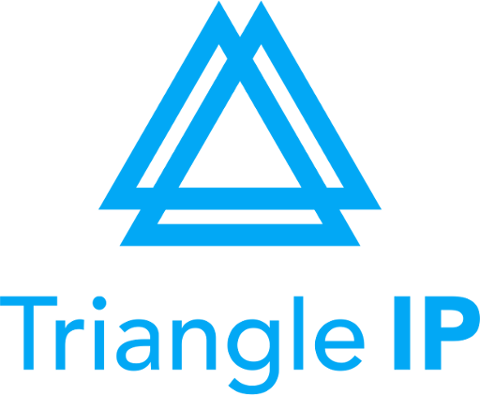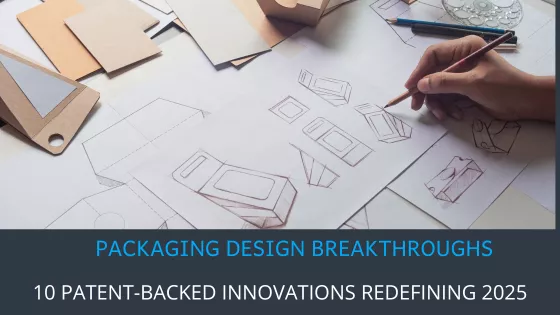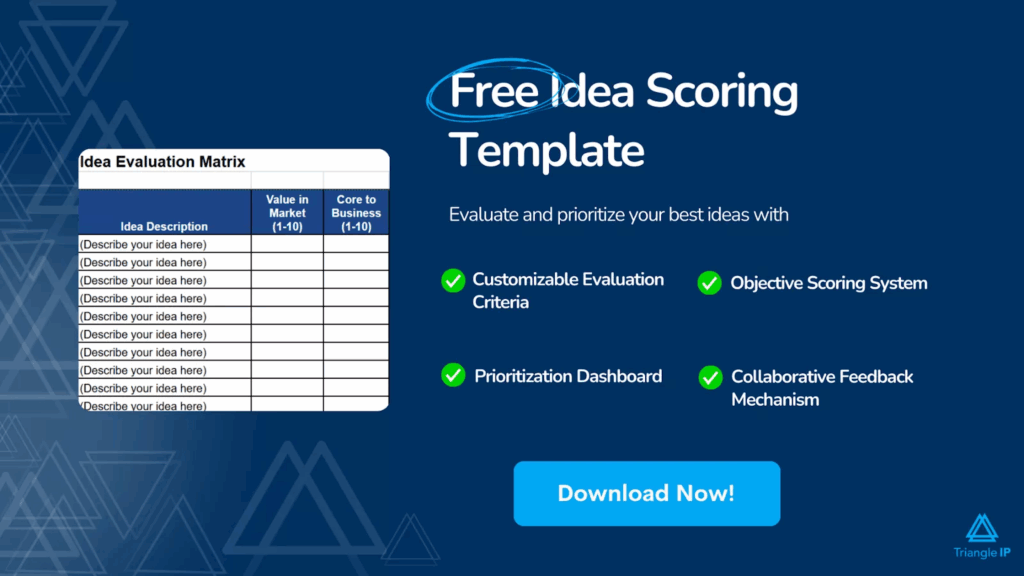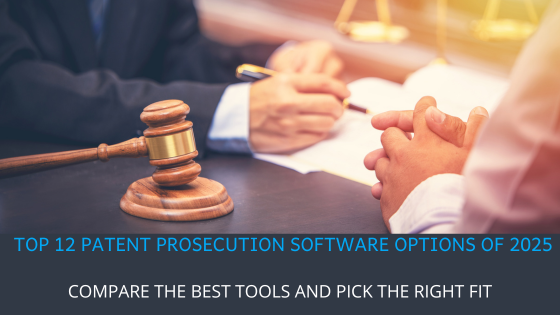| TL;DR: Packaging teams face noise, regulation, and copyable shapes. Most “innovation” mixes material hype with vague claims. Innovators need protectable forms that improve real use. This article catalogs 10 patent-backed examples of innovation in packaging design from 2025. We cover structure, interfaces, and geometry. Each entry lists the patent, market deployment, funding, and awards. Adapt these patterns to improve ergonomics and shelf impact. |
Packaging is now a product, a channel, and in many cases, the brand. The stakes are real. 99% of brand owners say packaging is “highly important” to brand success. And 88% of teams plan “connected packaging” campaigns where the pack drives engagement.
To understand what’s actually changing in packaging design, we went past claims and analyzed 2025-granted patents and award-winning structures. We looked at grip-friendly bottles, one-hand lids, spill-control caps, and tamper-evident safety features that show interference instantly. We also tracked which designs are already on shelves, which are pre-launch but built for commercialization, and which are defensible versus easy to copy.
This article breaks down 10 real examples of innovations in packaging designs. For each one, we’ll share what the design actually does, the patent behind it, where it’s being deployed, funding or partnerships if disclosed, and any awards.
Let’s get started!
1. C-Loop Can End
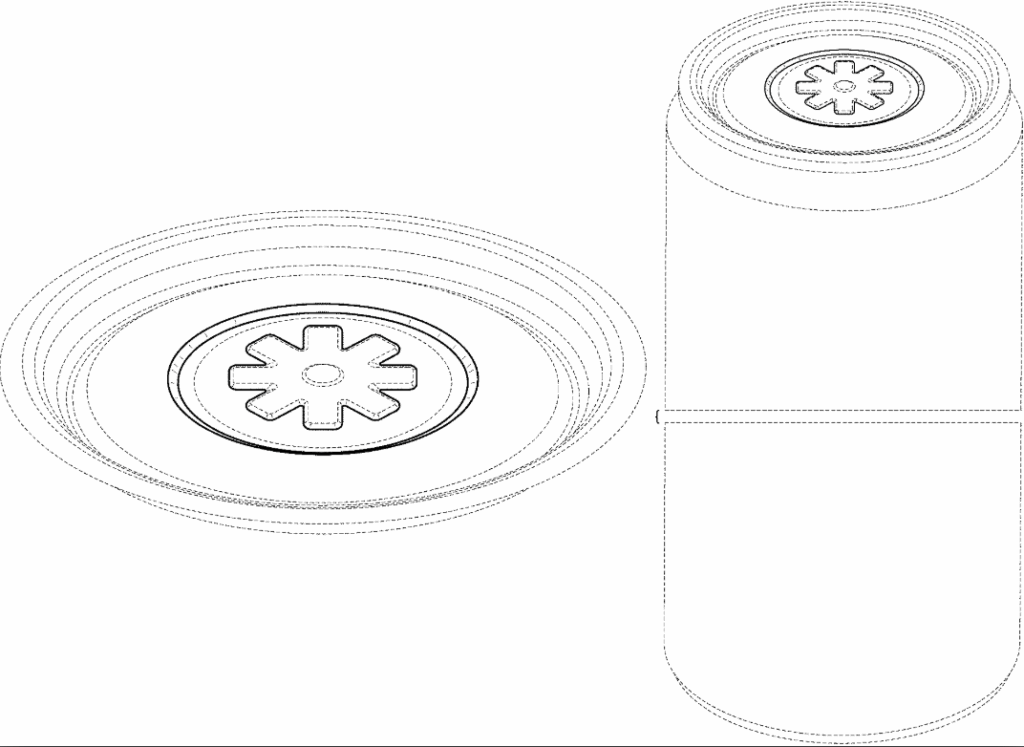
Source- Google Patent
The C-Loop Can End by C-Loop Packaging transforms an ordinary metal can into a reusable container. It introduces a reclosable lid design that replaces the traditional single-use can end. The lid features a central opening and guidance ribs that help align a clip-on dispensing cap or spout. Once attached, users can easily pour the contents and reseal the can for later use.
This design focuses on functionality, convenience, and sustainability. It enables consumers to refill and reuse cans, rather than discarding them. The material remains fully recyclable, supporting circular economy goals. By turning a disposable can into a reusable dispenser, the innovation redefines how packaging serves both practicality and the planet.
Key Details of the Innovation
- Location: Stockholm, Sweden
- Patent Status: U.S. design patent D1068472, granted April 1, 2025. Additionally, a utility patent application (US 2025/0206497 A1) for the auto-interfacing can end was published in June 2025.
- Funding: Private; with a strategic minority stake. Ball Corporation owns 7% of C-Loop Packaging Sweden AB (per Ball’s 2024 10-K, Exhibit 21).
- Market Deployment: Deployed via Meadow’s MEADOW KAPSUL™, with Ball supplying cans and ends. EU mass production is set to begin at a new factory in Żyrardów.
2. Inno-Pak Tamper Evident Carton
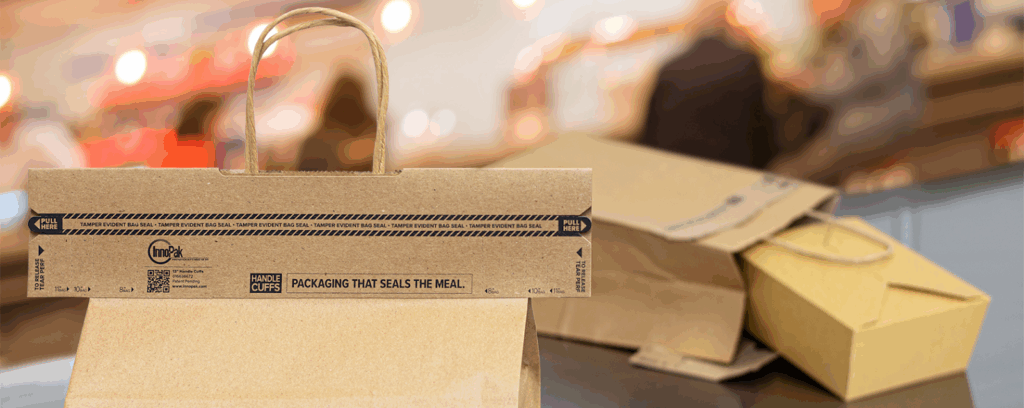
Source- Inno-Pak
The tamper-evident folding carton by Inno-Pak adds a smart safety feature to standard paperboard packaging. It includes a perforated tear strip built into the carton’s lid flap, which must be broken when the carton is opened. This simple yet effective design instantly shows if a package has been tampered with. The rest of the carton remains similar to a typical take-out box, with standard floor and side panels.
This innovation is beneficial for food packaging and food delivery. It ensures products reach customers securely and untouched. The design combines ease of use with visible safety assurance, helping brands build trust.
Key Details of the Innovation
- Location: Delaware, Ohio, USA
- Patent Status: U.S. utility patent US 12,264,000 B2, granted April 1, 2025 (filed Jan. 5, 2023, inventor Steven A. Mayer). This patent covers the carton’s structure and method of use, including the tear-strip feature.
- Funding: The patent appears to be corporate-funded within Inno-Pak, which became PE-backed via Handgards/Wynnchurch’s acquisition in Feb 2025. Previously, Inno-Pak raised $50M in conventional debt (Mar 2020) while under Emerald Lake.
- Market Deployment: As of October 2025, Inno-Pak’s tamper-evident carton appears to be pre-commercial; only Handle Cuffs™ seals are widely deployed.
Score your best concepts before you build. Download Triangle IP’s Free Idea Scoring Template to compare designs with clear, team-friendly criteria.
3. Hint® Water Bottles

Source- Hint Inc
The redesigned water bottle by Hint Inc. blends aesthetic appeal, functionality, and sustainability. Featuring a distinct silhouette, faceted sides, and embossed branding, it enhances grip, usability, and brand recognition. The design reinforces Hint’s identity while standing out in the crowded beverage market.
Committed to sustainability, Hint uses 100% recyclable PET bottles that now contain 40% less plastic than before. The brand also explores eco-friendly alternatives such as aluminum cans, aligning its packaging innovation with reduced material use and a lower environmental impact.
Key Details of the Innovation
- Location: San Francisco, California, USA
- Patent Status: U.S. design patent D1083609, issued July 15, 2025, assigned to Hint Inc.
- Funding: Hint Inc. remains a privately held company, having raised around $59.34 million across multiple rounds. Its most recent Series D round in August 2020 secured $25 million, led by Springboard Growth Capital with participation from Gingerbread Capital and Medina Heights Capital Partners.
- Market Deployment: Widely deployed across the U.S., available in over 30,000 retail stores, including Costco, Target, Walmart, and Aldi. They are also available for purchase online through DrinkHint.com and major e-commerce platforms. Hint maintains a fully U.S.-based supply chain, with nationwide bottling and distribution supporting both retail and direct-to-consumer channels.
Also Read: 11 Inspiring Examples of 3D Printing Innovations Powering the World in 2025
4. Tilt® Ergonomic Packaging
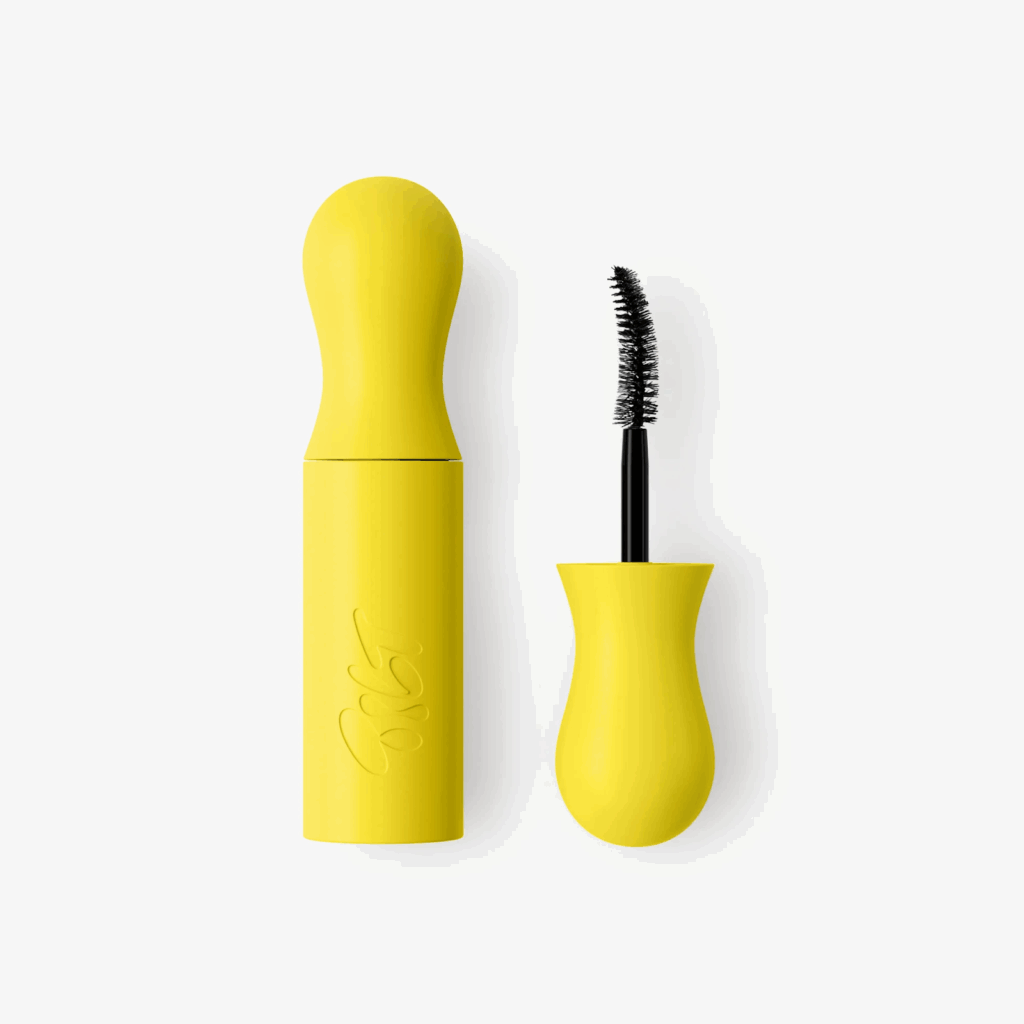
Source- Tilt Beauty
The Tilt line by Tilt Beauty introduces accessible makeup packaging designed for inclusivity and comfort. Launched in 2025, the collection features ergonomically contoured products, including Lashscape Mascara with a shorter wand for improved control and the Grip Stick lip treatment, which comes in a chunky, easy-to-hold case. Each package is slightly tilted and sculpted, making it easier for users with arthritis or limited dexterity to handle.
Beyond usability, the design promotes universal accessibility. Packaging includes easy-open tear strips and braille labels for the individuals with visual impairments. The result is a line that’s both visually distinctive and deeply inclusive. This proves that beauty packaging can be stylish, functional, and empowering for everyone.
Key Details of the Innovation
- Location: Los Angeles, California, USA (company HQ)
- Patent Status: US D1094892S — Cosmetic product case (assignee: Tilt Beauty, LLC), granted Sep 23, 2025. Covers the ornamental casing form that enables the grasp-friendly geometry.
- Market Deployment: Launched Q1 2025. Products are sold exclusively via Tilt’s website and have been available since early 2025. Tilt Beauty’s mascara and lip treatment are available on the market, and refills are offered (the packaging is designed to be refillable).
- Regulatory Status: Tilt’s packaging is the first in the beauty industry to earn the Arthritis Foundation’s Ease of Use® certification for its easy-open design. It also received the National Psoriasis Foundation Seal for its gentle formula and packaging considerations.
- Award/Recognition: Tilt Beauty was showcased at the Pentawards for inclusive design.
5. WELLA CARE Ultimate Bottle
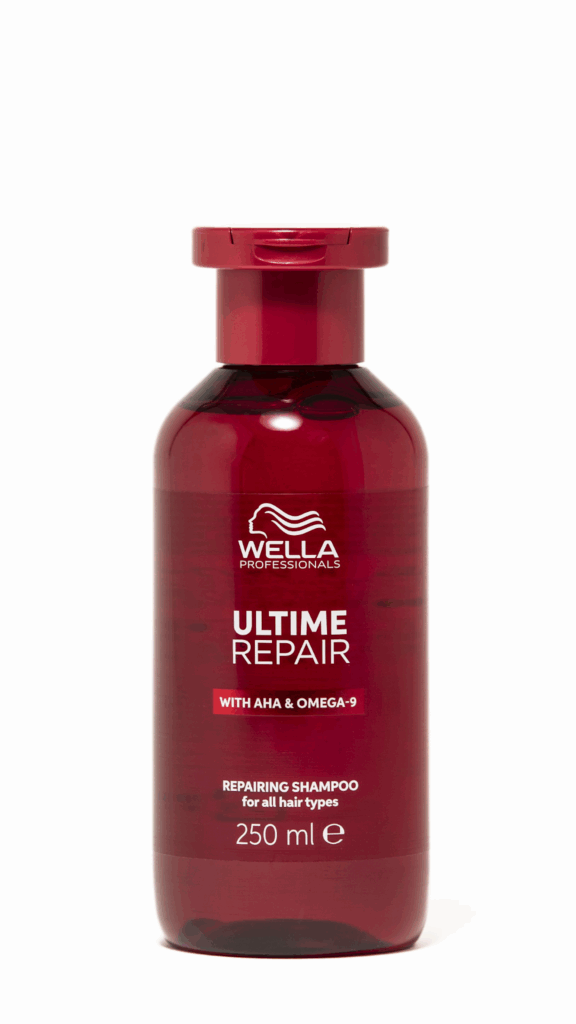
Source- WorldStar
The “Ultimate Bottle” by Wella is another breakthrough in sustainable and ergonomic packaging design. Made entirely from 100% post-consumer recycled (PCR) PET, it’s engineered for full recyclability with a clear body, wash-off label, and separable cap. The design reduces environmental impact while maintaining a premium look and feel.
Its most distinctive feature is the set of patented flex-panels on the front and back. These panels gently deform inward when squeezed. This gives the round bottle the easy-dispense feel of an oval one without using extra plastic. Once released, the bottle quickly regains its shape, ensuring durability and comfort. The result is a lightweight, recyclable, and user-friendly design that redefines what sustainable beauty packaging can look and perform like.
Key Details of the Innovation
- Location: Darmstadt, Germany
- Patent Status: Patent applied, not yet granted as of 2025. (Wella notes “patent applied flex-panels” in the bottle’s design.
- Market Deployment: Wella Company’s “Ultimate Bottle” has been introduced globally across its Wella Professionals and Care product lines, supported by Wella’s presence in 150+ countries.
- Award/Recognition: Wella’s Ultimate Bottle won a WorldStar Global Packaging Award 2025 for excellence in sustainable packaging.
Turn your concepts into a shortlist. Quickly score your next lid, cap, or bottle using Triangle IP’s Free Idea Evaluation Matrix.
6. Wellman THERMOCUP™

Source- ThePackHub
The Thermocup™ by Wellman Packaging is an insulated cup designed for hot beverages. Made from 100% polypropylene (PP), it’s a mono-material, double-walled cup that keeps drinks hot while staying cool to the touch. The air layer between the walls provides natural insulation, eliminating the need for cardboard sleeves or laminated coatings.
Unlike traditional paper cups with plastic linings, the Thermocup™ is fully recyclable (PP5) and reusable, making it both practical and eco-friendly. Its injection-molded, one-piece design ensures durability, and the snap-on PP lid maintains temperature while preventing spills. Together, these features make Thermocup™ a smart, sustainable upgrade for the on-the-go coffee experience.
Key Details of the Innovation
- Location: Sydney, Australia
- Patent Status: Public media claims that Thermocup uses Wellman’s “globally patented IsoTherm technology” in the rib/insulation features.
- Market Deployment: Produced in Australia under contract with Nestlé Professional for Hot Chockee cups, with an annual capacity of about 4.7 million units.
- Award/Recognition: It is the WorldStar 2025 Winner in Non-Alcoholic Beverages category. It also earned a Bronze in the 2024 Australian Packaging Innovation & Design (PIDA) awards for Sustainable Packaging Design.
Also Read: Green Technology Innovation: 15 Examples from Around the World
7. Thermos Sip/Flip Travel-Lid Geometry
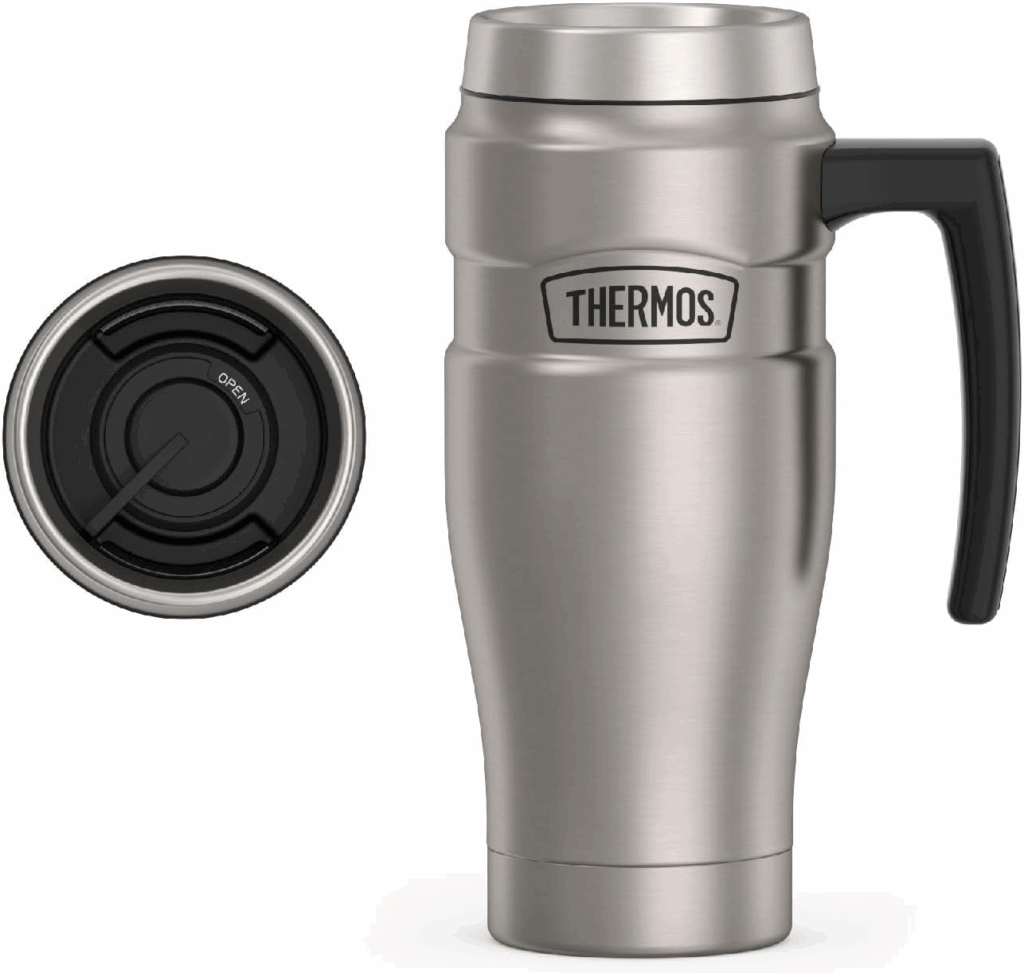
Source- Amazon
The dual-mode travel lid by Thermos offers a smarter, more flexible way to enjoy drinks on the go. Its design allows users to “sip” or “flip”, functioning as both a small sip opening and a larger straw or chug opening within one lid. This is achieved through a rotating or flipping insert that lets users switch modes effortlessly.
Engineered for convenience and versatility, the lid maintains leak-proof performance when sealed, making it ideal for travel mugs and tumblers. Whether you prefer sipping hot coffee or using a straw for cold drinks, this design adapts instantly. It’s a great example of how smart engineering and user-centered design can elevate everyday drinkware.
Key Details of the Innovation
- Location: Schaumburg, Illinois, USA
- Patent Status: U.S. design patents D1064744 (issued Mar. 4, 2025) and related lids (Thermos has multiple) cover aspects of this lid.
- Funding: Thermos L.L.C. has not raised any external funding. It operates under the ownership of Taiyo Nippon Sanso Corporation.
- Market Deployment: Thermos’s “Sip/Flip” travel-lid geometry is in market across current Thermos products featuring flip or push-button lids. Examples include the 22-oz Sipp™ Water Bottle with a push-button, flip-up carry loop, and other flip-lid hydration bottles sold on Thermos.com.
- Award/Recognition: While not a public award winner, this innovation was featured in product reviews. For example, Wired Magazine’s “Best Travel Mugs 2025” praised the new Thermos lid for its clever dual functionality (no need to swap lids).
8. KISS Precision Cosmetics Cap

Source- KISS
The precision applicator cap by KISS Products enhances control and comfort in cosmetic packaging. Designed for brush-on nail glue and nail art pens, it transforms small bottles into pen-like tools for greater accuracy. The long, tapered cap features facets or finger rests, enabling users to hold it steadily, like a pen, while applying fine details.
This ergonomic design improves grip, balance, and precision, making intricate nail work easier and more professional. The cap may also protect an integrated nozzle or micro-brush, ensuring cleanliness and durability. By merging form and function, KISS Products delivers a sleek, user-friendly design that elevates both performance and aesthetics in cosmetic packaging.
Key Details of the Innovation
- Location: Port Washington, New York, USA
- Patent Status: U.S. design patent D1095247, issued Sep. 30, 2025. The patent simply titles it “Cap,” and covers the ornamental shape of the cap.
- Market Deployment: Actively used in its commercial products, notably the PowerFlex Precision Nail Glue, which features an extended nozzle tip for accurate application. The same precision packaging is evident across major retailers, including Amazon and KISSUSA.com, confirming widespread market adoption.
Ready to spark more patentable packaging designs? Grab the Free Patent Incentive Guide and launch a simple, fair inventor program.

9. Shenzhen Holographic Display Container

Source- Google Patent
The holographic display package blends packaging design with digital technology to create a futuristic consumer experience. It features an integrated visual module that projects a 3D holographic image or animation directly on the pack. For instance, a perfume box might feature a floating logo or motion effect through a thin, transparent window, transforming a simple surface into a dynamic visual display.
The technology uses reflective holographic film or micro-projection elements built right into the packaging. It is self-contained and interactive, requiring no external devices. Designed to grab attention instantly, this innovation transforms packaging into an immersive brand experience, merging aesthetics, storytelling, and technology in one striking design.
Key Details of the Innovation
- Location: Shenzhen, China
- Patent Status: U.S. design patent D1094326, issued Sep. 23, 2025 (listed as “Holographic display container”).
- Market Deployment: Experimental deployment. As of 2025, such containers are in pilot use for high-end products. We might see them in luxury electronics or spirits.
10. Mr. Bar-B-Q Sauce/Oil Bottle Cap

Source- Robidoux
The dual-purpose bottle cap by Mr. Bar-B-Q adds practicality and control to everyday condiment bottles. Designed for BBQ sauces and cooking oils, it features grip ridges and tabs that make opening effortless, even with greasy hands. A self-closing valve prevents drips and spills, keeping both the bottle and cooking area clean.
Its standout feature is the intuitive reclose system, which gives a snap sound or flip-down cue when securely sealed. Some versions may also use a FIFO (First-In, First-Out) design, dispensing from the bottom for quick use and refilling from the top. By combining easy handling, cleanliness, and smart design, Mr. Bar-B-Q’s cap delivers a mess-free, outdoor-friendly packaging solution for modern cooking needs.
Key Details of the Innovation
- Location: Hauppauge, New York, USA
- Patent Status: U.S. design patent D1093148, issued Sep. 16, 2025.
- Funding: No product-level VC or grant has been disclosed for the “Grip & Reclosure” sauce/oil cap. The innovation appears corporate-funded within Mr. Bar-B-Q’s operations. Mr. Bar-B-Q has been part of Blue Rhino / Ferrellgas Partners, L.P. since their 2013 acquisition, indicating access to internal capital rather than standalone rounds.
- Market Deployment: Rolling out in 2025. Mr. Bar-B-Q has started including this cap on their branded sauces and oil bottles in grill accessory kits. Additionally, they offer it as a standalone “universal BBQ bottle cap” that consumers can put on standard sauce bottles.
Also Read: How to Predict Software Patent Costs in 2025
Now that we’ve examined 10 innovations, the next step is execution. Capture the best concepts, prioritize them, and protect them. This is where the Triangle IP’s TIP Tool™ comes into the play. It turns ideas into defendable assets.
Turn Your Packaging Design Innovations into Protectable IP with Triangle IP
Triangle IP helps you convert design wins into defendable IP with a workflow your team will actually use. It centralizes ideas, aligns stakeholders, exposes pipeline risk, and adds examiner and cost intelligence so you file smarter, not just faster.
The tool helps you:
- Capture every sketch and test result with Idea Capture to prevent leakage and duplicates.
- Collaborate across design, legal, and marketing using Real-Time Collaboration to align on scope and claims.
- Visualize stages from idea to grant with Patent Pipeline Visibility to spot bottlenecks early.
- Estimate timelines and budgets using Case Analytics and Cost Estimation to forecast ROI by concept.
- Benchmark strategy with Patent Counsel and Examiner Statistics to pick forums, arguments, and attorneys wisely.
- Stay current with Automatic USPTO Updates so status changes trigger action without inbox hunting.
- Decide faster with role-based Dashboards that surface risk, priority, and next steps at a glance.
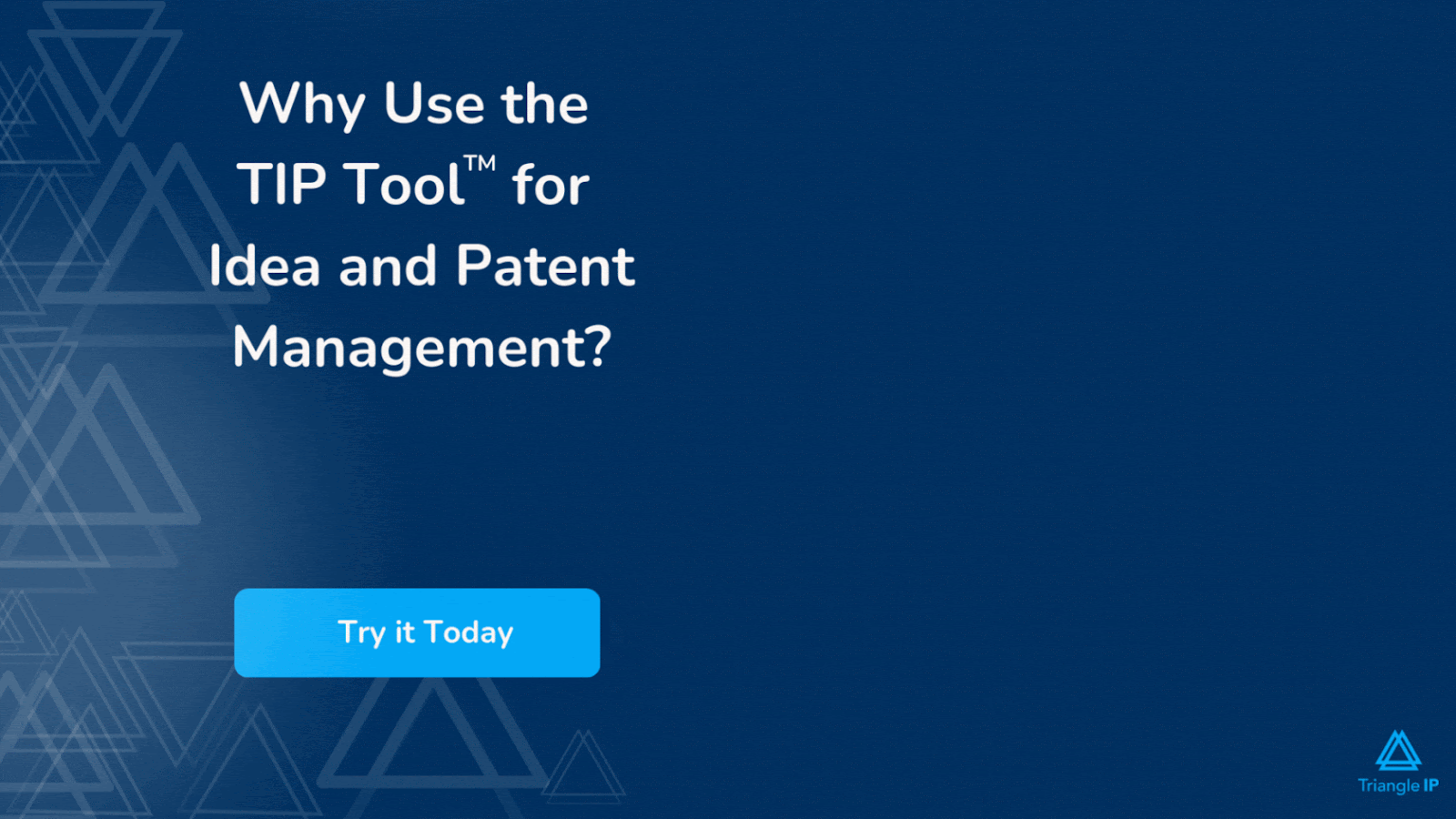
Your team has the patterns; now build the portfolio. Use the Triangle IP’s TIP Tool™ to capture, evaluate, and prosecute the right designs before your competitors do.
Visit Triangle IP to get started with the TIP Tool™ today or book a quick demo.
Disclaimer: This article is for general information only. It summarizes details drawn from public sources available at the time of writing and may become outdated. Please independently verify product claims, patent status, certifications, awards, regulatory classifications, and launch or market availability with the respective organizations. Nothing here constitutes legal advice or an endorsement. All trademarks, logos, and patents remain the property of their owners.
FAQs
1. Can You Patent a Packaging Shape Such as a Bottle, Cap, or Lid?
Yes. You can protect the ornamental appearance of your packaging through a design patent. Over time, if your packaging becomes strongly associated with your brand, you can also pursue trade dress protection to reinforce its long-term distinctiveness in the market. It’s wise to review the basics of intellectual property law (patents, trademarks, copyrights, and trade dress) to decide which combination best safeguards your innovation.
2. Is a Design Patent Enough, or Do I Need a Utility Patent Too?
A design patent protects how your packaging looks, while a utility patent protects how it works. Many companies pursue both types to secure comprehensive protection, covering appearance and functionality together. Before filing, it’s smart to prepare a cost estimate to effectively budget your design and utility filings, as pursuing both can increase overall protection costs.
3. Can I Copyright Packaging Instead of Patenting It?
Copyright protects the artistic and visual elements of your packaging, like illustrations, logos, label layouts, and written content. However, it rarely applies to the container’s 3D form or structure. If you want to protect the shape or physical design, you’ll need a design patent or trade dress protection instead.
4. What Do Examiners Expect in Design Drawings for Packaging?
When filing design patents for packaging, examiners expect precision, clarity, and consistency in presentation of the visual design. Follow these best practices to improve approval chances and avoid common objections:
- Use solid lines to represent claimed ornamental features and broken lines for unclaimed or contextual parts.
- Maintain identical proportions across all drawings to ensure consistency.
- Apply surface shading to represent contours, depth, and texture accurately.
- Provide multiple views (front, rear, side, top, bottom, perspective) to fully depict the design’s visual impression.
- Avoid clutter, environmental objects, or excessive background details that distract from the design.
- Ensure clean, high-resolution illustrations that align with USPTO drawing standards.
Don’t forget to review examiner statistics for your art unit to anticipate likely refusals, amendment needs, and prosecution timelines.
5. What If My Packaging Innovation Also Involves Graphics or AR Labels?
When your packaging innovation also involves graphics, digital elements, or AR labels, protect each component separately. Patent the container’s shape or structure through a design or utility patent. Next, safeguard the visual and interactive elements through copyright or trademark protection. If the AR feature involves software or data processing, consider filing for a utility patent that covers that functionality. Always document your concept early and prioritize filings based on commercial value and technological complexity.
